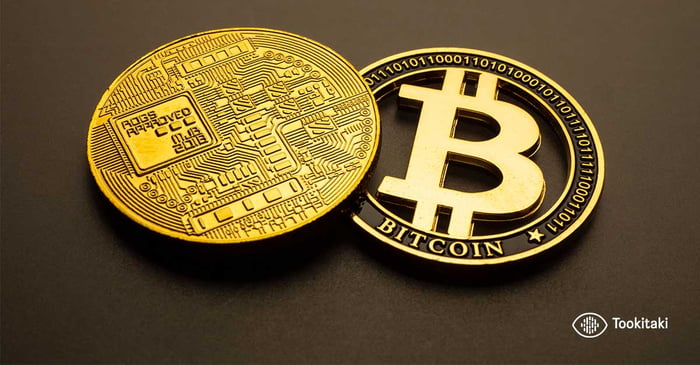50 Shocking Statistics About Money Laundering and Cryptocurrency
Money laundering is a financial crime that relies on stealth and flying under the radar. Understandably, detection poses a significant challenge in this field. Historians think that the term money laundering originated from the Italian mafia, specifically by Al Capone. During the 1920s and 30s, Capone and his associates would buy laundromats (where ‘laundering’ comes from) to mask profits made from illegal activities such as prostitution and selling bootlegged liquor. The statistics about money laundering are difficult to assess given the secretive nature of the crime.
Money laundering legislation has been created and implemented in countries all over the globe, and global organisations such as the United Nations Office on Drugs and Crime (UNODC) and the Financial Action Task Force (FATF) regulate the global banking industry’s activities. Yet money laundering remains a threat and a phenomenon that is hard to track. Despite its incognito nature, there are some statistical insights available on this global crime that costs the world around USD 2 trillion every year.
Statistics on Money Laundering
- In 2009, the estimated global success rate of money laundering controls was a mere 0.2% (according to the UN and US State Department)
- Authorities intercepted USD 3.1 billion worth of laundered money in 2009. Over 80% of which was seized in North America (UN estimate)
- The estimated global spending on AML compliance-related fines was USD 10 Billion in 2014.
- Globally, banks have spent an estimated USD 321 billion in fines since 2008 for failing to comply with regulatory standards, facilitating money laundering, terrorist financing, and market manipulation.
- In 2019, banks paid more than USD 6.2 billion in AML fines globally.
- FIU has categorised 9,500 non-banking financial companies (out of an estimated 11,500 registered) as ‘high-risk financial institutions’, indicating non-compliance, as of 2018.
- As of 2020, the USA was deemed compliant for 9 and largely compliant for 22 out of 40 FATF recommendations.
- In India as of 2018, approximately 884 companies are on high alert for money laundering and assets worth INR 50 billion. They are being probed under the Prevention of Money Laundering Act (PMLA 2002).
- From 2016-17, searches were conducted in money laundering 161 cases filed under PMLA
- As of 2018, India was deemed compliant for 4 of the core 40 +9 FATF recommendations, largely compliant for 25, and non-compliant for 5 out of 6 core recommendations.
- The estimated amount of total money laundered annually around the world is 2-5% of the global GDP (USD 800 Billion – 2 trillion)
- In 2009, total spending on illicit financial activities like money laundering was 3.6% of the global GDP, with USD 1.6 trillion laundered (according to the UNODC)
- Over 200,000 cases of money laundering are reported to the authorities in the UK annually.
- About 50% of cases of money laundering reported in Latin America are by financial firms.
- According to the government of India, approximately USD 18 billion is lost through money laundering each year.
- A 1996 report published by Chulalongkorn University in Bangkok estimated that a figure equal to 15% of the country’s GDP ($28.5 billion) was illegally laundered money.
- In the UK, the total penalties from June 2017 to April 2019 on anti-money laundering non-compliance was £241,233,671.
- Iran stands at the top of the Anti-Money Laundering (AML) risk index with a score of 8.6, the world’s highest. Afghanistan comes second with a score of 8.38, while Guinea-Bissau comes 3rd with a score of 8.35.
- Mexican drug cartels launder at least USD 9 billion (5% of the country’s GDP) each year
- Money laundering takes up about 1.2% of the EU’s total GDP.
- Completing the Know Your Customer (KYC) process usually costs banks around USD 62 million.
- 88% of consumers say their perception of a business is improved when a business invests in the customer experience, especially finance and security.
Cryptocurrency Money Laundering Statistics
The cryptocurrency space presented an unexplored and unfamiliar territory to AML regulators and still remains so in some parts of the world. However, many governments such as Japan, Singapore, Malaysia, China, the U.S.A, and Spain, among others, have been actively regulating the crypto market in their countries.
While crypto regulations for anti-money laundering are relatively new, some statistical insights into this newly formed industry are available.
- Europol (financial analyst agency) claims that the Bitcoin mixer laundered 27,000 Bitcoins (valued at over $270 Million), since its launch in May 2018.
- Research shows that the total amount of money laundered through Bitcoin since its inception in 2009 is about USD 4.5 Billion.
- 97% of ransomware catalogued in 2019 demanded payment in Bitcoin.
- The UK-based crypto firm, Bottle Pay ceased operations in 2019 due to the regulatory requirements prescribed by the 5th Anti-Money Laundering Directive. The firm closed down operations after raising USD 2 million because it did not agree with the KYC requirements outlined in 5AMLD.
- In the first five months of 2020, crypto thefts, hacks, and frauds totalled $1.36 billion, indicating 2020 could see the greatest total amount stolen in crypto crimes exceeding 2019’s $4.5 billion.
- The global average of direct criminal funds received by exchanges dropped 47% in 2019. (Darknet marketplace)
- In the first five months of 2020, crypto thefts, hacks, and frauds totalled $1.36 billion.
- Though the total value collected by criminals from crypto crimes is among the highest recorded, the global average of criminal funds sent directly to exchanges dropped 47% in 2019.
- 57% of FATF-approved Virtual Asset Service Providers (VASPs) still have weak, porous anti-money laundering measures. Their AML solutions and KYC processes fall at the weak end of the required standard.
- Japan reported over 7,000 cases of money laundering via cryptocurrencies in 2018.
- Only 0.17% of funds received by crypto exchanges in 2019 were sent directly from criminal sources.

Anti-money Laundering Software Market
With money laundering methods evolving at a rapid pace and regulatory compliance requirements adapting to combat them, AML Software has become an indispensable part of any institution’s Anti-money Laundering process. The Regtech market for AML software is growing at a strong rate.
- The global anti-money laundering software market was valued at $879.0 million in 2017 and is projected to reach $2,717.0 million by 2025.
- 44% of banks reported an increase of 5–10% in their AML and BSA budgets and are expected to increase their spending by 11-20% in 2017.

Fraud
Another financial crime that is quite a common occurrence, fraud also poses a problem for financial institutions and their clients across the world. Fraud and money laundering have an unseen connection.
Money that is acquired through fraudulent means often needs to be laundered to be usable and accepted in the mainstream economy. Fraud and money laundering may not seem related at first sight, but they certainly are. Here are a few statistics on fraud across the world.
- 47% of Americans have had their card information compromised at some point and have been victim to credit card fraud
- 21% of Americans have faced debit card fraud
- Credit card fraud amounts to around USD 22 billion globally
- 47% of the world’s credit card fraud cases occur in the US
- 69% of scams occur when the consumer is approached via telephone or email
- Credit card fraud increased by 18.4% last year and is on the rise
- Identity theft makes up 14.8% of all reported fraud cases
- Worldwide financial institutions paid fines amounting to USD 24.26 billion last year due to payment fraud
- Identity theft represents about 14.8 per cent of consumer fraud complaints with reports of 444,602 reported cases in 2018
- Identity fraudsters robbed USD16 billion from 12.7 million U.S. consumers in 2014
- They stole USD18 billion in the U.S. in 2013
- The total number of cases of fraud in 2019 was 650,572
- The end of July 2020 showed over 150,000 COVID-19-related fraud threats
- In 2019, almost 165 million records containing personal data were exposed through fraud-related data breaches
- Identity theft is most common for consumers aged between 20-49 years
To know how Tookitaki combats money laundering and other financial crimes with cutting-edge technology, speak to one of our experts today.
Anti-Financial Crime Compliance with Tookitaki?




